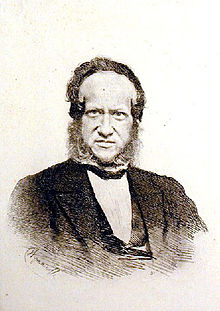Franz Josef Ruprecht
- View a machine-translated version of the German article.
- Machine translation, like DeepL or Google Translate, is a useful starting point for translations, but translators must revise errors as necessary and confirm that the translation is accurate, rather than simply copy-pasting machine-translated text into the English Wikipedia.
- Do not translate text that appears unreliable or low-quality. If possible, verify the text with references provided in the foreign-language article.
- You must provide copyright attribution in the edit summary accompanying your translation by providing an interlanguage link to the source of your translation. A model attribution edit summary is
Content in this edit is translated from the existing German Wikipedia article at [[:de:Franz Joseph Ruprecht]]; see its history for attribution. - You may also add the template
{{Translated|de|Franz Joseph Ruprecht}}to the talk page. - For more guidance, see Wikipedia:Translation.
Franz Josef Ruprecht | |
|---|---|
 | |
| Born | (1814-11-01)1 November 1814 Freiburg im Breisgau |
| Died | 4 April 1870(1870-04-04) (aged 55) Saint Petersburg |
Franz Josef Ruprecht (1 November 1814 – 4 April 1870) was an Austrian-born physician and botanist active in the Russian Empire, where he was known as Frants Ivanovič Ruprekht (Russian: Франц Ива́нович Ру́прехт).
Life
He was born in Freiburg im Breisgau, and grew up in Prague, where he studied, and graduated as Doctor of Medicine in 1836. After a short period in medical practice in Prague, he was appointed curator of the herbarium of the Russian Academy of Sciences in Saint Petersburg in 1839.
In July and August 1841, together with a colleague, professor Sawelhaw of the Russian Academy, he organised and accompanied an expedition to the island to Kolguyev Island in the Barents Sea.[1]
He served as assistant director of the Saint Petersburg Botanical Garden between 1851 and 1855, and professor of botany in 1855 at the University of Saint Petersburg.[2] He died in Saint Petersburg in 1870.
He described many new plants collected in the Russian Far East, including Alaska, then under Russian rule; examples include Adiantum aleuticum, Lonicera maackii, and Phellodendron amurense.
Memorials
The genus Ruprechtia is named after him.[3]
Publications
- Ruprecht, F. J. Symbolae ad historiam et geographiam plantarum Rossicarum, St. Petersburg in 1846
- Ruprecht, F. J. Flora Caucasi, P. 1. St. Pétersbourg 1869
- Postels, A., Ruprecht, F.J. Illustrationes algarum, Weinheim, J. Cramer 1963
- Ruprecht, F. J. Flora ingrica (flora of the Leningrad region).
References
- ^ Trevor-Battye, Aubyn. (1895). Ice-bound on Kolguev, Constable, London, 1895.
- ^ Darwin Correspondence: Franz Josef Ruprecht
- ^ Huxley, A., ed. (1992). New RHS Dictionary of Gardening. Macmillan ISBN 0-333-47494-5.
- ^ International Plant Names Index. Rupr.
- Extensive biography on Allg. Deutsche Biographie [1][permanent dead link]
- Fedotova A.A. The Origins of the Russian Chernozem Soil (Black Earth): Franz Joseph Ruprecht's ‘Geo-Botanical Researches into the Chernozem’ of 1866]], Environment and History, 16 (2010): 271–293
- v
- t
- e
   | This article about a Russian botanist is a stub. You can help Wikipedia by expanding it. |
- v
- t
- e











